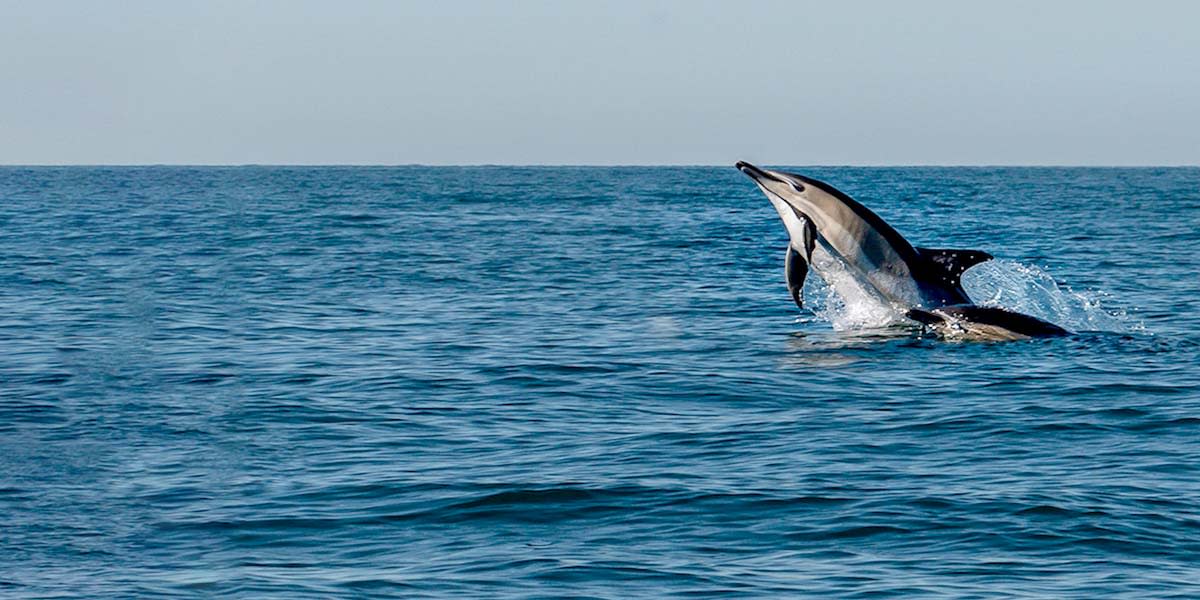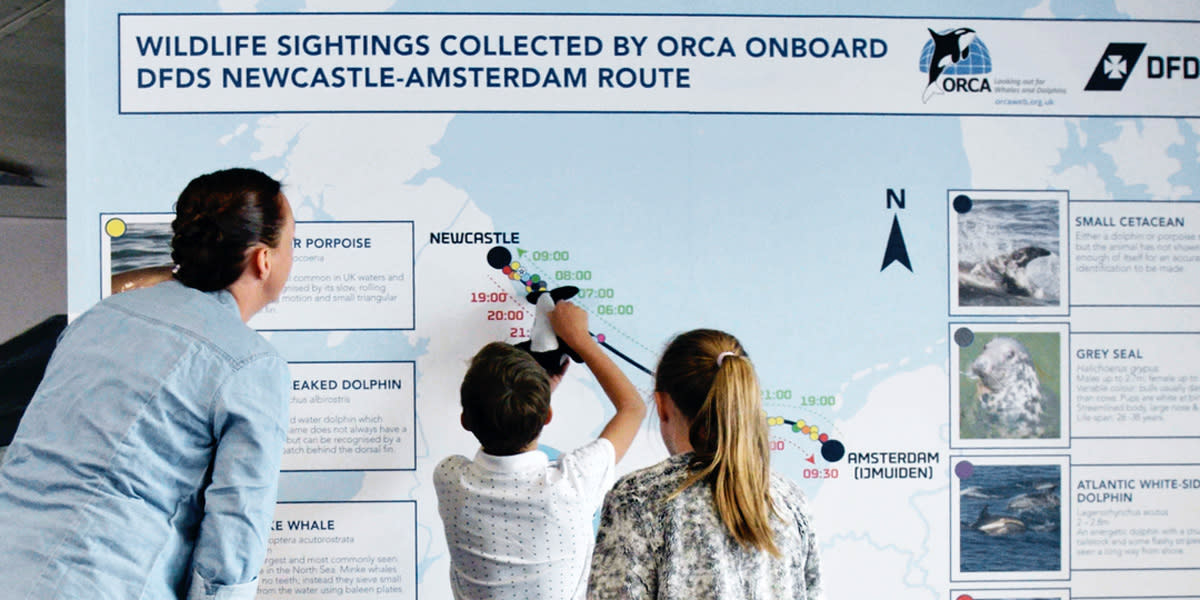
The Ultimate Beginner’s Sealife Spotting Guide
The Ultimate Sealife Spotting Guide – What Sea life can you spot from your ferry trip?
Traveling via a ferry is always a great way to get the fun started before you’ve even reached your holiday destination! With it being such a different experience from your usual plane or coach trip, there is so much more to explore - including the middle of the ocean.
We’re all accustomed to viewing the sea from the shore, or even a tall clifftop, but not often do we get a 360 view the chance to potentially see creatures that call the middle of the ocean their home. And what better way to make the journey even more fun for the whole family than turning it into a sea life expedition?!
That said, we’ve put together everything you might need for some sea life spotting on your next ferry trip across Europe.
Our interesting, interactive fact files let you know what creatures have been previously spotted in that area, as well as signs to look out for, active months, and of course, a fun fact to help you get acquainted with the sea life that may be lurking around you!
We’ve also delved into the charity work that we do for animal conservation and what you will need to pack on your next ferry trip to get the most out of your sea life spotting fun.
Sealife Fact files – What creatures might you spot?
Some of the main areas of sea in Europe consist of the English Channel, the North Sea, the Baltic Sea and Skagerrak. We’ve found some of the most popular animals to have been previously spotted in these oceans and compiled a number of fact files for you to use so you know exactly what to look out for and which route to take for your own chance to spot these amazing creatures.

Our Charity Work
We recognise the importance of caring for the animals that call the sea our ferries cross home. We’ve specifically partnered with wildlife charity ORCA. Over the last few years, we have been inviting ORCA volunteers aboard our ferries to do their own bit of sea life spotting and look after the animals that inhabit the North Sea and English Channel.
They observe various species of marine animals like dolphins, whales and gannets. Not only do they list the areas where these species live, like you can do with help of our fact files, but with the right help they can take measures to protect them. DFDS and ORCA work together organising and promoting programmes and events to help take care of marine life and raise awareness of marine conservation.
What do the expert’s say?
“Spending time out on deck gives you the chance to spot all sorts of amazing wildlife, including dolphins, porpoises, seabirds and seals. When you are out watching, just keep your eyes out for anything unusual in the water - dark shapes, splashes, diving seabirds or anything else out of the ordinary - and you could have the chance to spot something exciting!
Not only is it one of the most enjoyable ways to spend time, ORCA truly believe that seeing whales and dolphins in the wild is the best way to appreciate how incredible these animals are, and the more people that get a glimpse into the world, the better our chances of protecting them for future generations. You don't have to be a marine biologist to protect something - having passion and commitment to marine conservation through citizen science projects means that everyone who cares about whales and dolphins has the opportunity to help safeguard their future.
If you want to learn more about spotting marine wildlife, you can download the ORCA OceanWatchers app for free from the App Store and Play Store - not only can you try your hand at collecting scientific data, but it also includes a handy ID guide to help you work out which species you are seeing if you are lucky enough to have an encounter!”
Steve Jones - Director of Fundraising & Operations, ORCA

What do you need to pack for Sealife Spotting?
If you’re planning on doing a little beginner sea life spotting with the family on your next ferry trip, there are a few things you should pack, alongside your holiday attire, to make sure you’re in with the best chance to see some cool and exciting sea dwellers!
We’ve put together a checklist, so you know exactly what to put in your backpack to help you on your sea life spotting adventure. From binoculars for your chance to spot a distance Puffin, to a notepad and pen to keep notes of the potential shark and dolphin spots. If you’re a budding marine biologist, then be sure to start your own journal to return to on your next ferry trip!
Summary
Trying your luck at sea life spotting is a great way to kick off your holiday early, or even just to pass the time. It’s a one-of-a-kind experience that you can enjoy as a couple or as a family where you can potentially see something new and even learn a bit! We offer a number of ferry routes that travel straight through the aforementioned waters which will give you the opportunity to perhaps see one of their previously spotted habitants, whether that’s in the sky, on the surface or on the shore. Be sure to check out what we have to offer, and book your trip today.
